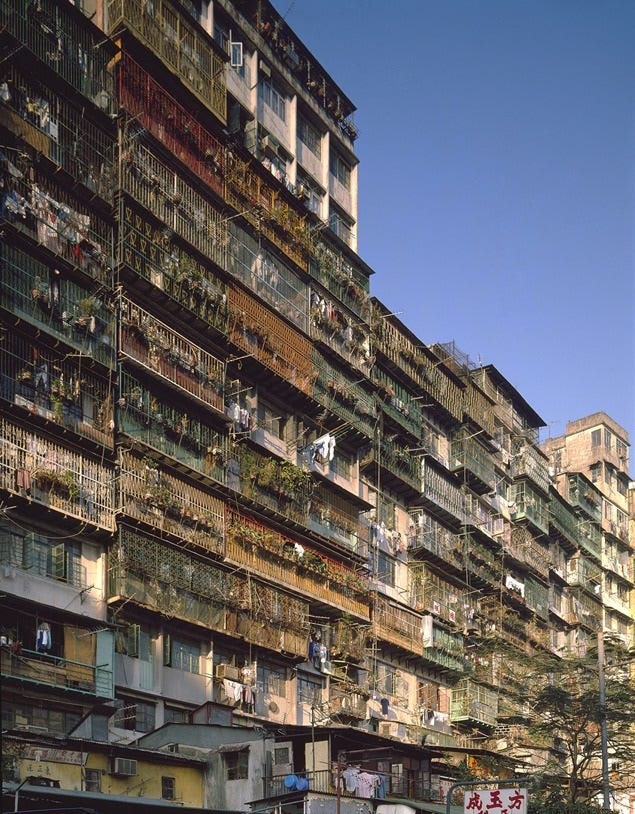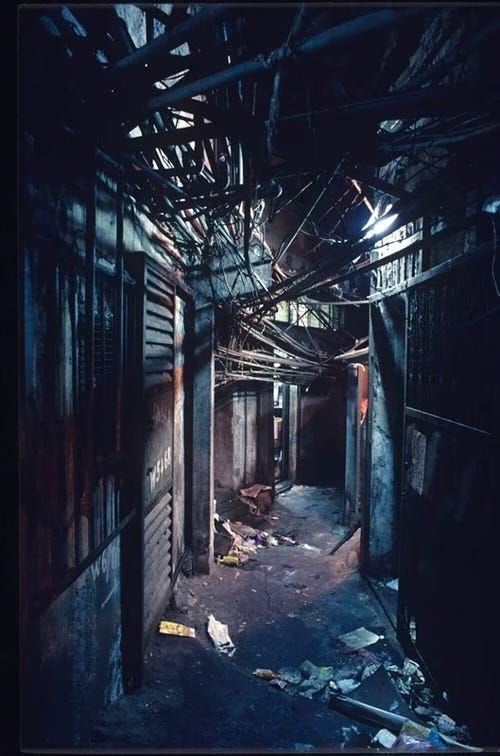The Kowloon Walled City, a once-infamous urban anomaly, stood as a testament to the intricate interplay between history, architecture, and human life. Located in Hong Kong, this densely populated and lawless enclave has left an indelible mark on urban history. This essay explores the captivating history of the Kowloon Walled City, from its origins as a military fortification to its ultimate demolition and transformation into a symbol of architectural fascination.
The story of the Kowloon Walled City begins in the 19th century when the British Empire extended its influence over Hong Kong. In 1842, as part of the Treaty of Nanking, the British gained control of Hong Kong Island, but the adjacent Kowloon Peninsula remained a disputed territory. The Qing Dynasty erected a fortification in Kowloon in 1810, known as the Kowloon Walled City, to maintain control over the area. The fort's high walls were intended to defend against pirates and potential British incursions.
As the years passed, the British leased the New Territories in 1898, which included Kowloon, from the Qing Dynasty for 99 years. This move caused the Kowloon Walled City to fall into a state of neglect. As the Qing Dynasty declined, the fort's significance diminished, and it became a haven for squatters. By the mid-20th century, it had evolved into a densely populated urban slum.
The Kowloon Walled City gained notoriety for its unique status as a lawless territory. With neither British nor Chinese authorities eager to govern it, the city became a refuge for fugitives, illegal activities, and an extensive network of interconnected buildings. This environment led to anarchy, as crime and unregulated businesses thrived within its walls.
Despite its grim reputation, the Kowloon Walled City was home to thousands of residents who built makeshift apartments, shops, and factories within its confines. The living conditions were deplorable, with inadequate sanitation, overcrowding, and a lack of basic services. Yet, the community managed to develop its own self-sustaining ecosystem, including schools, clinics, and markets.
The Kowloon Walled City's existence came to an end in 1993 when the Hong Kong government, recognizing the need for public safety and urban redevelopment, decided to demolish the entire enclave. This ambitious project involved relocating thousands of residents and flattening the densely packed structures.
Today, the Kowloon Walled City exists only in memory and photographs. However, its legacy endures as a symbol of urban complexity, resilience, and architectural curiosity. The unique architectural design of the city, with its interconnected buildings, narrow alleys, and vertical expansion, continues to captivate architects, urban planners, and historians.
The history of the Kowloon Walled City is a testament to the complex relationship between human communities and the built environment. From its origins as a military fort to its transformation into an anarchic urban enclave, and ultimately its demolition, the Kowloon Walled City remains a unique chapter in the annals of urban history. Its legacy lives on as a reminder of the indomitable spirit of those who once called it home and the enduring fascination it holds for urban enthusiasts worldwide.









Nice bit of history, thank you.
I first went to Kowloon in June, 1967 and last time in 1992.
It was a fascinating place for shopping but also “other “ activities.
I especially enjoyed a window view as the plane came in too land between the buildings with laundry stuck out of porches and windows to use solar energy to dry their wash of the tenements. The plane flew so close you could look in and watch people.
There’s a big push now to reduce human CO2 emissions. The Kowloon residents represented what is necessary to do so per capita.
Those in rural towns and suburbs s in the US represent a lifestyle of producing the maximum CO2 per resident regardless if the drive an electric car or not, my experience is they won’t even use solar energy to dry their wash.
Great focus! I was just recording a podcast where I talk about KWC. Great minds think alike 🤩 It’s a fascinating place in HK history.